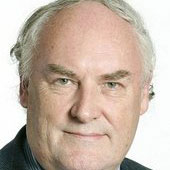The Road to 2050 (Part I)
What major challenges will the global community face as it approaches mid-century?
November 24, 2011

The Club of Rome was the first and, for many years, the most influential think-tank on long-term future issues. In 1972, “Limits to Growth,” the first book commissioned by the Club of Rome and a pioneer work at the time, “kick started” the environmental movement that was to follow, got thousands of people to begin thinking about our natural environment and shaped some of the more enlightened policymakers of that time.
In many ways, the genius of “Limits to Growth” was the fact that it asked the right questions. It posed the dilemma as a problem in search of a solution (all too often this is reversed!). And it focused us all on the longer term. Intellectually, it also stressed the importance of systems thinking.
Future of Global Governance
The Road to 2050 (Part I)
Real Values and Their Role in Global Governance (Part II)
Global Governance and the Role of Markets (Part III)
Employment and Ecology: The Twin Challenges for Humanity (Part IV)
There was intense debate around “Limits to Growth,” especially among the technological optimists and those who mistakenly understood the book as a series of predictions rather than a reflection of outlooks and scenarios.
Over the course of the next two decades, many fine books from eminent researchers were prepared and submitted as reports to the Club of Rome. While ad hoc in nature, they were of high quality and great relevance.
One important hallmark of the Club of Rome is its willingness to think forward. As we celebrate 40 years of “Limits to Growth,” it is worth considering life 40 years onwards. I have chosen 2050 as a convenient place to reset our global clock, to consider how the world may differ from today, and as a convenient timeframe through which we will have to put in place a new planetary order if we are to satisfy our dream of a safer and fairer world.
Within the first decade of this millennium, we have seen five crises:
- Poverty: We are witnessing the moral crisis of a planet where there is plenty, yet it is shared with so few. It remains indefensible that more than one-third of our fellow humans remain in dire and absolute poverty. At the turn of the century, world leaders pledged to halve world poverty by 2015. This goal will not be met.
- Finance: We remain in the midst of a global financial crisis, one that has affected millions of people throughout the world. What started as a series of largely containable national and regional banking crises from the 1970s onwards has transformed itself into a global crisis in the real economies of the world. Improved management and oversight of our financial systems has started, but the pace is glacial — and the efforts remain woefully weak and sporadic.
- Food: We have witnessed a food crisis as a result of the rapid rise of food commodity prices, and their impact on poor countries and poor people. It resulted in many being pushed below the poverty line. The food crisis was due to many reasons, including historic low prices that couldn’t continue, technological plateaus in productivity, and competition for land use.
- Ecology: We have a global ecological crisis that affects us now and will continue to do so well into the future. The consequences of not repairing and then effectively managing the planet’s stock of natural capital will lead to unknown but potentially very dangerous outcomes. Fortunately, climate change has now moved to center stage.
- Work: An unemployment crisis of global proportions is upon us now. There is uncertainty about future levels of unemployment, currently estimated globally at over 200 million, with perhaps up to a billion people underemployed. Our inability to create jobs will consign many millions to poverty, induce social and political unrest and will undermine any hopes for a more secure and sustainable world. Unemployment remains the single largest global failure.
Looking to 2050
If we look forward to 2050, we can envisage a number of significant changes:
- The global population will likely grow from seven billion to perhaps 9.5 billion (current estimates range from around eight to 10.5 billion).
- Current estimates of global GDP are around $60 trillion, and even at modest per capita growth rates in the emerging economies of the world, we could easily see a world economy (as we conventionally measure it today) of closer to $200 trillion. Imagine three worlds sitting on our present world, but stretched to the limits (or beyond?) with regard to consumption and production patterns.
- The current sharing of global wealth, in which 80% of the world’s population accounts for only 20% of the global wealth, is unsustainable. While this ratio has been consistent for the past two decades, it is starting to shift. The year 2010 represents a watershed in terms of aggregate wealth: On a global GDP/power purchasing parity (PPP) basis, the emerging economies are roughly now equal to the rich world. This is a significant geo-economic shift and potentially an important geo-political shift.
- Demand for goods and services is set to increase dramatically, driven by population gains, rising per capita incomes and the shift from current low per capita income consumption patterns. Demand for food is likely to more than double by 2050, and energy needs may increase three-fold.
- Demand for clean water will rise to meet the needs of the present one-billion-plus people who have no access to potable water or decent sanitation and to meet incremental demands from a growing population. Water resources will continue to be stretched, although globally, water per se will not be scarce.However, the costs of harnessing water will rise exponentially and discontinuously and place huge fiscal and economic burdens on countries to deliver water. Together with the provision of potable water, dramatic increases (four-fold or more) in water efficiency in the agricultural sector will be needed.
- It is estimated that 27% of the world’s population is under the age of 15: for the future a large, capable and ready workforce in the making? Perhaps? Or a major source of social unrest? Possibly, indeed likely? Future numbers are unknown, but on current trends it is possible that around three billion young people will be job seeking by the middle of this century. Unemployment fuels discontent and social turbulence and perpetuates poverty, misery and disenfranchisement. A sustainable future is a job-full future. A job-full future is a safer and more secure future.
Inflection point in global affairs
We clearly are at an inflection point in global affairs. We have seen five global crises this decade — and not one has been managed with great skill or political determination, and the remedial measures have not been commensurate to the tasks at hand. The fault lines were clear. Yet few have explicitly recognized that these crises have common roots and need common actions.
We need a change of direction based upon new and enriched values. We need a more human-centered economics where real societal values are reflected in public and private decisions. And we need new institutions that guide us towards a more stable and secure future.
As we consider the future, let’s not be daunted. Let us not forget that we are wiser, more informed, better able to communicate with one another at speeds that could not be considered even 20 years ago. We can call on a world of bright, capable minds who will want to contribute to a better world. There is much to build upon, even as there is much to do.
Read Part II here.
Editor’s note: This essay was adapted from the author’s presentation at the 2011 Salzburg Trilogue. Hosted by the Bertelsmann Stiftung, the Salzburg Trilogue facilitates international cultural dialogue by bringing together recognized public figures to consider matters of global importance.
Read previous
Financial Markets as Drug Pushers
November 23, 2011
